What ad.xtendmedia.com Is?
ad.xtendmedia.com is a browser malware that would redirect on its own and release numerous pop ups during your surfing session among which are mostly porn related content. ad.xtendmedia.com seems to be a fast-grow virus that some victims have pictures and sound on target monitor screen and some get outgoing access to other redirect viruses like 8.26.70.252. Therefore, ad.xtendmedia.com is considered as an adware. How Harmful an adware could be and how to get rid of it? Keep reading and you'll find the answer.
What Is ad.xtendmedia Created for?
By relentless popping up advertisements, it places you into highly risk circumstances to click on its ads by mistake. Therefore, an encrypted code or keylogger can be downloaded onto the target system to scrape your valuable information stored wherein and to trace down your favorite, email account, password by filtering visit history on your browser.
There are other collateral damages that may raise your concern:
- Internet browser settings may be modified such as the Home Page and Search Engine;
- Installations of additional malware or rogueware may be possible;
- Internet connection speed is getting slower and slower;
- Firewall cannot stay active and security programs act weirdly.
Detialed Steps to Follow up for ad.xtendmedia Complete Removal
1. Disable any suspicious startup items.For Windows XP:
step: Click Start menu -> click Run -> type: msconfig in the search bar -> open System Configuration Utility -> Disable all possible startup items.
2. Remove add-ons:
Internet Explorer:
1) Go to Tools -> ‘Manage Add-ons’;
2) Choose ‘Search Providers’ -> choose ‘Bing’ search engine or ‘Google’ search engine and make it default;
3) Select ‘Search Results’ and click ‘Remove’ to remove it;
4) Go to ‘Tools’ -> ‘Internet Options’; select ‘General tab’ and click website, e.g. Google.com. Click OK to save changes.
Google Chrome
1) Click on ‘Customize and control’ Google Chrome icon, select ‘Settings’;
2) Choose ‘Basic Options’;
3) Change Google Chrome’s homepage to google.com or any other and click the ‘Manage Search Engines…’ button;
4) Select ‘Google’ from the list and make it your default search engine;
5) Select ‘Search Result’ from the list to remove it by clicking the ‘X’ mark.
Mozilla Firefox
1) Click on the magnifier’s icon and select ‘Manage Search Engine…’;
2) Choose ‘Search Results’ from the list and click ‘Remove’ and OK to save changes;
3) Go to ‘Tools’ -> “Options”. Reset the startup homepage or change it to google.com under ‘General tab;
3. Disable proxy
- Click on Tools on the menu bar
- select Internet options
- go to Connections tab
- select LAN settings at the bottom of the dialog
- under the Proxy sever, untick 'use a proxy server for your LAN (These settings will not apply to dial-up or VPN connections).'
- Click OK
4. Show hidden files
step: a) open Control Panel from Start menu and search for Folder Options;
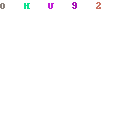
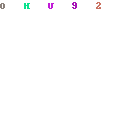
b) under View tab to tick Show hidden files and folders and non-tick Hide protected operating system files (Recommended) and then click OK;
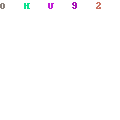
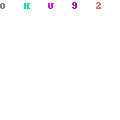
5. Open Windows Task Manager and close all running processes.
step: Use CTRL+ALT+DEL combination to open Task Manager

Please stop all the following processes.
random.exe
6. Delete all related files and registry values in your local hard disk C.
step: Hold down the Windows key on your keyboard and press the "R" button. Type in "regedit" and hit "Enter" to gain access to the Registry Editor.
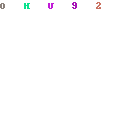
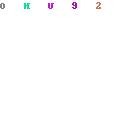
Registry:
HKEY_LOCAL_MACHINE\SOFTWARE\Microsoft\Active Setup\Installed Components\random
HKEY_LOCAL_MACHINE\SOFTWARE\Microsoft\Windows\CurrentVersion\run\random
HKEY_CURRENT_USER\Software\Microsoft\Installer\Products\SOAU8277512 “(Default)”=”1?
HKEY_CURRENT_USER\Software\Microsoft\Windows\CurrentVersion\Uninstall\“UninstallString” = “‘%AppData%\[RANDOM]\[RANDOM].exe” -u
HKEY_CURRENT_USER\Software\Microsoft\Windows\CurrentVersion\Uninstall\“ShortcutPath” = “‘C:\Documents and Settings\All Users\Application Data\SOAU8277 512.exe” -u’”
HKEY_CURRENT_USER\Software\Microsoft\Windows\CurrentVersion\RunOnce “SOAU8277 512” = “‘C:\Documents and Settings\All Users\Application Data\random.exe’
step: Click on the “Start” menu and then click on the “Search programs and files” box, Search for and delete these files:
C:\WINDOWS\assembly\GAC_64\Desktop.ini
C:\Windows\assembly\GAC_32\Desktop.ini
C:\WINDOWS\system32\ping.exe
Video Sample Guide on How to Remove Ad.xtendmedia.com
Kind Reminder: if you get some dysfunctions after you've successfully remove ad.xtendmedia adware and you fail to overcome them, you are welcome to start a live chat with Tee Support experts 24/7 online for real-time help.

No comments:
Post a Comment